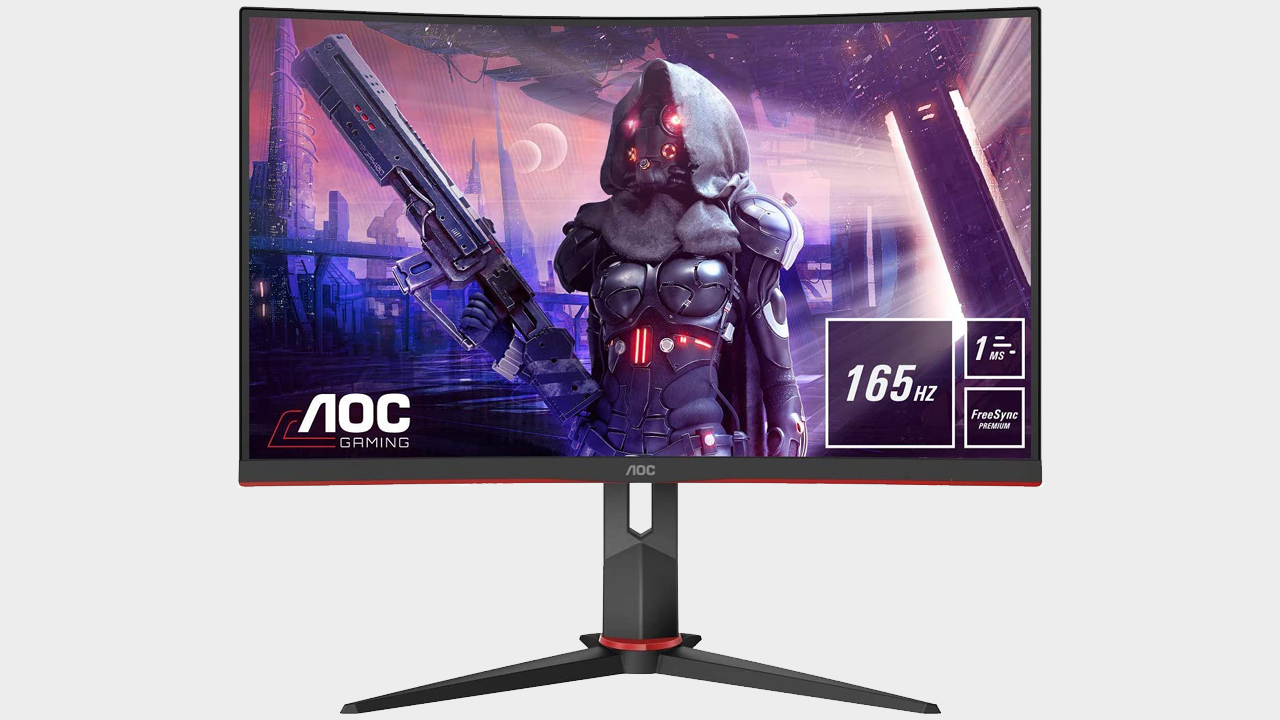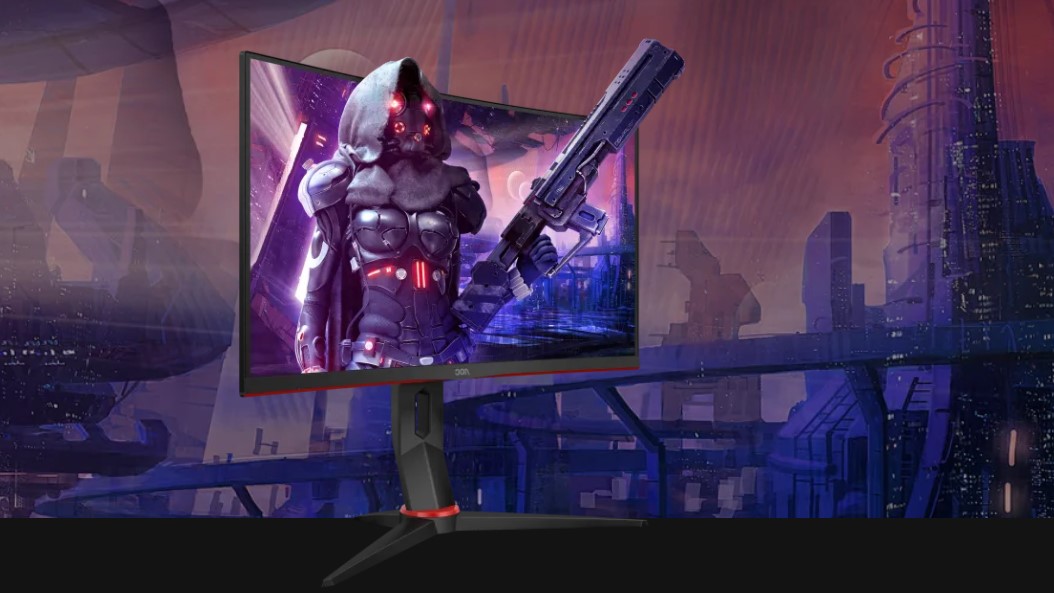GamesRadar+ Verdict
A speedy, well-built 1440p monitor with a great price point, but a panel that's let down by a few faults.
Pros
- +
Speedy refresh rate
- +
Quality design and build
- +
Great price point
Cons
- -
Disappointing levels of brightness
- -
Poor pixel response
Why you can trust GamesRadar+
High refresh gaming used to be the preserve of big-budget PCs - only the most powerful of the best gaming PCs, usually. It still isn’t exactly cheap. But that buttery smooth 120Hz-plus experience is becoming gradually more mainstream. For proof, look no further than the fact that high refresh is a core feature of both the upcoming PS5 and Xbox Series X when combined with the best gaming TVs.
Whether PC or console is your gaming weapon of choice, of course, you’ll need a display capable of kicking out those lofty frame rates. Enter the new AOC C27G2U. It promises 165Hz refresh from a premium panel for around $260 / £240. That’s an appealing proposition and this largely offers something attractive, something that's aggressively priced, well built, but not without flaws.
Note: The 'C27G2U' variant seems to be an EU-only model but only by a factor of one or two features - the C27G2 model is a very close match in the USA and you'll see that listed here too and a lot of what the review covers is relevant to that monitor too.
Design & Features
Scan the broader feature set and, for the most part, it gets even better. The C27G2U’s curved 27-inch panel is claimed to be good for both 1ms response and 4,000-to-one static contrast. That impressive contrast stat is a dead giveaway that this is a VA rather than IPS or TN panel. Generally, VA has the best contrast of any panel type, along with good viewing angles but not always the best response. Hold that thought.

Support for both Nvidia G-Sync and AMD FreeSync are also included, though at this price point, G-Sync support is inevitably of the ‘Compatible’ variety. Integrating an Nvidia G-Sync board would be too expensive for this class of monitor, but this does put it in content for being a top G-Sync compatible FreeSync monitor. AOC has also configured the C27G2U with both HDMI and DisplayPort connectivity. In other words, it’ll hook up nicely to both PC and console. Rounding out the connectivity is a four-port USB 3.0 hub, which is handy for connecting peripherals and keeping cable clutter to a minimum.
From here, however, things become more complicated. The AOC C27G2U is rated at just 250 nits for peak brightness, a figure that’s unimpressive in old school SDR terms let alone compared to the latest HDR displays capable of 1000 nits or more.
Then there’s the 1080p or 1920 by 1080 pixel native resolution. In an age where 4K is being heavily hyped for next-gen console gaming and 1440p is widely viewed as the sweet spot on PC, 1080p is undeniably old hat - or, at least, getting that way. And yet it actually makes sense if the remit is high refresh gaming on a tight budget. The lower the resolution, especially on PC, the easier it is to hit high frame rates, and the less money you’ll need to spend on components like one of the best graphics cards (looking at you, RTX 3090).

Performance
Anyway, if that’s how the AOC C27G2U stacks up on paper, what is the real-world gaming experience actually like? Unfortunately, that mediocre brightness rating is immediately apparent. This is not a terribly punchy, vibrant panel. On the other hand, the impact of the strong contrast performance is obvious too. There’s very little backlight bleed.
What you might not entirely expect, even given the VA panel technology, is the C27G2U’s poor pixel response performance. AOC rates response at 1ms, but the harsh reality is that’s not what the subjective experience looks like. Three levels of response-accelerating overdrive are available. But even the most aggressive setting still suffers from visible blurring, even just wiggling windows around on the desktop. In-game, it’s not always noticeable. Over time, you’d probably adjust to it. But it is often noticeable and for an out-and-out gaming monitor, it’s disappointing.

Overall - should you buy it?
In other regards, this is a nice monitor. The 165Hz refresh ensures both very fluid frame rates and really zappy response to control inputs, as opposed to actual pixel response, while the gentle 1500R curve of the panel adds just a little extra involvement. The chassis also looks and feels pretty good, too, and the stand, with its height, rotate and tilt adjustment, is a quality item.
It’s aggressively priced, the AOC C27G2U, especially for a 165Hz monitor with a non-TN panel. So it’s never going to be one of the best gaming monitors. But the combination of dim brightness and mediocre response is still tough to swallow, even given the decent overall value proposition.
A serious dissertation on the finer points of input lag and overshoot followed by a forensic examination of AI-accelerated temporal upscaling. Such is a routine day in the working life of long-time tech wordsmith, Jeremy Laird. Along with GamesRadar, Jeremy’s 15-year back catalogue includes a host of tech and gaming outlets, including TechRadar and PC Gamer, not to mention contributions to mainstream media from the Independent to the Evening Standard. Complimenting Jeremy’s debilitating addiction to all kinds of digital hardware, he is also afflicted by an obsession with and a significant occupational sideline in cars and automotive technology.




